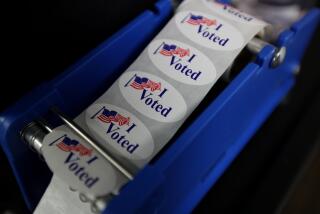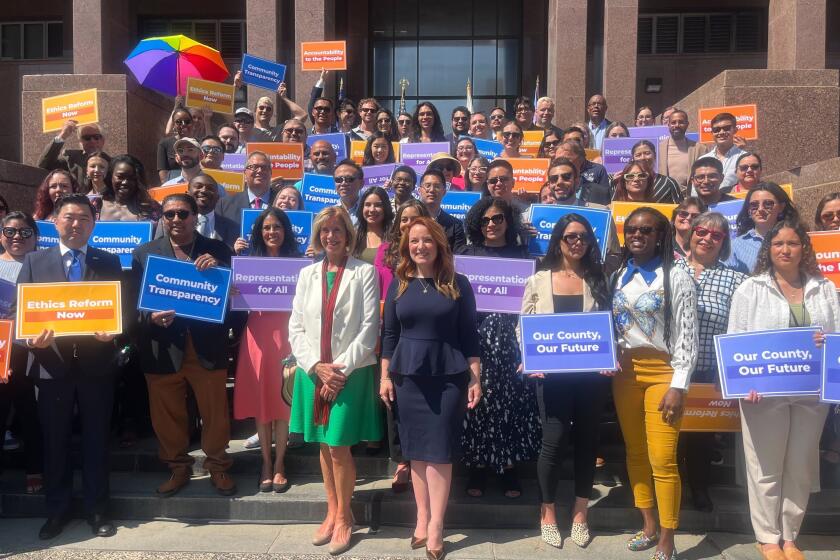Vote-by-Mail Plan Shelved in Long Beach : Elections: Council reverts to polling places after unexpected public outcry against the change.
- Share via
Two weeks after approving a plan to require all votes in municipal races to be sent through the mail or dropped off at City Hall, the Long Beach City Council reversed itself Tuesday night in the face of an unexpected public outcry.
Council members had voted 5 to 4 for the measure, which would have eliminated polls, after reviewing reports showing that vote-by-mail policies had increased turnout and slashed election costs in Stanislaus County and Modesto. Tuesday’s vote would have determined when to hold Long Beach’s first mail-in contest, but a swarm of letters and phone calls from opponents changed the minds of some council members who initially supported the idea. The council voted unanimously to shelve the plan.
Residents claimed that vote-by-mail elections would be vulnerable to ballot fraud and expressed anger at the possible loss of the voting booth tradition. Opponents at the council meeting also argued that vote-by-mail would increase the number of “yes” votes on an upcoming bond issue and result in a tax hike.
Councilman Tom Clark, who offered the initial plan, insists that postal politics will have its day and expects to try again when an “opportune moment” presents itself and the idea has sunk in a bit.
Under the proposal, voters would receive ballots in the mail one month before Election Day, fill them out and drop them in the mailbox or at City Hall.
Modesto officials reported that voter turnout jumped from 24.2% in 1991 to 44.4% in 1993, after the city went to postal elections. The procedure also reduced the cost of running an election from $1.25 per voter to $0.53 during that time, they said.
Local and state officials in Texas, Florida and elsewhere have experimented with similar vote-by-mail procedures since 1977, when California dropped its requirement that absentee ballots be used only by disabled voters or those away from home.
Clark said he envisions an Election Day in which citizens will exercise their suffrage rights electronically.
“You’re not going to be going to the polls,” he said. “That’s something that’s become outmoded.”
For now, he says the city, with its turnout for district primaries hovering about 25%, will have to stick with an inefficient process. He noted that city officials have expressed concern about the increasing difficulty of finding suitable locations for the polls and trained personnel to run them.
More to Read
Sign up for Essential California
The most important California stories and recommendations in your inbox every morning.
You may occasionally receive promotional content from the Los Angeles Times.













